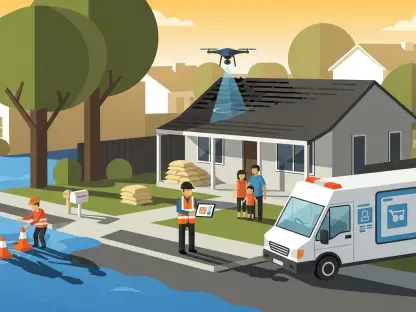Listen to the Article
For years, parametric insurance has been synonymous with weather-related dangers. Policies tied to specific, measurable events like wind speeds, rainfall levels, or earthquake magnitudes have long offered faster claims payouts and operational efficiency. However, as global risk profiles shift, B2B insurers are now looking beyond natural catastrophes, and the next wave of parametric innovation is already reshaping cyber, supply chain, and event-related coverages.
This insurance pays out based on set measurements, like wind speed or earthquake strength, instead of calculating actual losses. Its introduction marks a big change in how several industries manage risk. It allows quicker and more precise payouts, making it easier to insure against damages that used to be hard to measure. This article looks at how pre-defined insurance has evolved and what it covers today beyond its original focus.
Faster Payouts, Smarter Coverage
Parametric insurance works differently from regular insurance. Instead of paying for actual losses, it offers compensation based on set rules. A significant point to consider is basis risk, which means the payment given to the insured by the insurance company may be different from the actual loss. Being flexible sometimes results in people being paid more than they should. There are several good reasons to use this approach, including:
Quick Settlement: Instead of waiting for a manual check, files are processed once the conditions have been met.
Simplicity and Transparency: Reduced disputes about claims are possible when the pay rules are straightforward.
Coverage Versatility: Standard insurance policies do not always measure complex risks, trigger-based warranty helps fix this.
Though businesses did not need this type of coverage very often before, thanks to new technology and analysis, it is now being used in many more cases.
Covering the Risks Traditional Policies Miss
Here is why parametric insurance is expanding into new areas, beyond its original focus on weather issues:
Cybersecurity: As cyber threats grow, traditional insurance may not keep up. Parametric insurance offers payments based on the scale of a cyber attack, like how long a DDoS attack lasts, without needing to assess exact financial losses.
Supply Chain and Business Interruption: Political issues and natural events now easily disrupt global supply chains. Event-based coverage provides payments if a delay or disruption exceeds a specified duration.
Healthcare: When specific diseases are registered, parametric insurance releases funds for areas with poor healthcare, providing immediate financial support for personal or loved one care.
Energy Production: Weather changes can significantly impact renewable energy projects, and weather-linked payments help support operators financially through these types of policies.
Entertainment and Events: Live events and the entertainment industry face various risks. If severe weather alerts are issued, data-driven coverage can quickly pay out for insured events.
Why Parametric Insurance Is Gaining Traction
In event-based packages, insurers make payments as soon as the pre-agreed-upon events occur, eliminating the need for lengthy loss assessments. For companies, this results in easier access to cash during interruptions, and insurers have simplified ways to process claims and identify risks.
The demand for speed and certainty amid volatile threats is driving the adoption of this coverage in new commercial lines. According to industry analysts, the global parametric insurance market will surpass $30 billion by 2030, with non-weather risks making up an increasing share of that growth.
Meeting Modern Risks with Real-Time Triggers
With ransomware attacks surging, parametric policies linked to metrics like system downtime, number of breached records, or third-party service outages are gaining interest. These offer immediate liquidity to fund incident response and business continuity.
Parametric triggers in supply chain disruption warranties detect challenges such as worldwide events, port suspensions and strikes, shipment delays, supplier bankruptcies, and critical stock shortages.
B2B event insurance works for trade shows, corporate meetings, and eventual product launches, in addition to concerts and conferences. Public health bulletins, blocked entry for some attendees not showing up, could set off triggers.
Major challenges for insurers in their daily work
Parametric insurance brings about vast benefits, but it also has challenges. One obstacle is setting accurate parameters and thresholds, which requires extensive data analysis. Another issue is basis risk, which occurs when assumptions do not match actual losses. Some of the major adoption barriers are:
Reliable Sources of Data
Trigger-based insurance relies on external data models and indices for claims payouts, requiring frequent revisions to maintain accuracy. Insurers often struggle with developing and using these complex and costly models in various markets. Cybersecurity companies, supply chain managers, and event companies are required to supply accurate and always up-to-date information. These data sources should automate underwriting and claims procedures. There are still gaps between what insurance covers and what can happen to a business. This issue is worse with abstract risks like cyberattacks because their outcomes are hard to predict.
Unpredictable Payouts
Parametric insurance pays out when a specific event occurs, regardless of actual damages. This might lead some people to be less careful, knowing they’ll receive a payout. However, because climate change affects weather, it gets harder to forecast and set accurate premiums for these types of policies. So, catastrophe insurance policies might not completely pay for the losses caused by significant disasters. Also, event-based coverage does not offer as much flexibility in tailoring as traditional insurance.
New Approaches
Because payouts are tied to set rules and thresholds, fitting each person’s needs with the policy can sometimes be difficult. Policyholders should take time to understand their warranty because it may not cover everything a conventional policy would. That is why actuaries are reviewing how rates are set for event-based losses that usually have little previous history.
Even with these problems, parametric insurance can quickly provide coverage for defined risks. With the help of new technologies and data analysis, creating better risk models and getting easier access to these types of solutions will be possible.
What’s Next for B2B Insurers
The move beyond weather represents a pivotal opportunity for commercial insurers to differentiate through speed, transparency, and tailored risk solutions. Forward-thinking carriers are partnering with data analytics firms, reinsurers, and insurtechs to develop new parametric offerings aligned with today’s business realities.
As industries grow more dependent on digital infrastructure and global supply chains, demand for fast, frictionless risk transfer options will only increase. Trigger-based insurance, once a niche product for natural disasters, is well on its way to becoming a mainstream commercial tool, provided insurers can solve the operational challenges associated with it.









